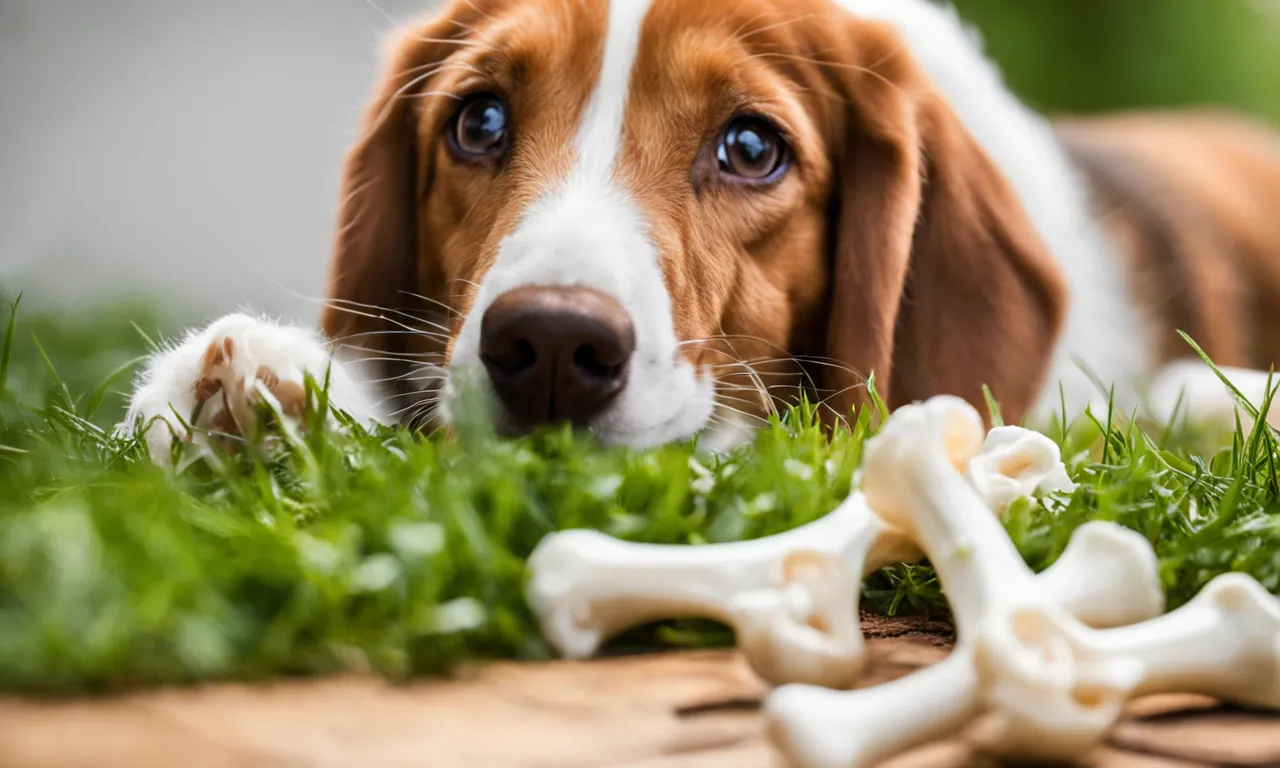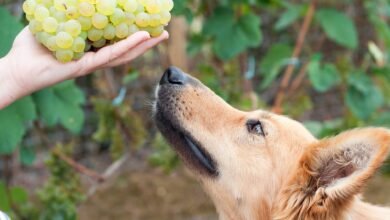
Can Dogs Eat Rabbit Bones? When it comes to feeding your dog rabbit bones, understanding the basics is key. Rabbit bones are smaller and more fragile compared to those from larger animals, which can affect how safely your dog can chew them.
These bones offer natural nutrients like calcium and phosphorus, which are great for your dog’s health. However, not all dogs may be suitable for rabbit bones, especially if they are aggressive chewers or have different size needs. Make sure to assess your dog’s chewing habits to ensure these bones are a safe choice.So let’s explore that- can dogs eat rabbit bones?
The Risks: Potential Dangers of Feeding Rabbit Bones to Dogs
If you’re asking, “Can Dogs Eat Rabbit Bones?” it’s important to understand the potential risks involved. While rabbit bones might seem like a natural treat for your dog, they can pose serious dangers if not handled properly. Here’s what you need to know.
Splintering: A Serious Hazard
- Small Bones: Rabbit bones, especially smaller ones, can easily splinter when chewed. These sharp fragments can cause serious injuries, such as punctures to the mouth, throat, or intestines.
- Internal Injuries: If a bone splinters, it can lead to internal damage as it travels through your dog’s digestive system. This can result in pain, bleeding, or even life-threatening conditions that require emergency veterinary care.
Cooked Bones: A Higher Risk
- Brittle Nature of Cooked Bones: Cooked rabbit bones are particularly dangerous because the cooking process makes them brittle. When your dog chews on these bones, they are more likely to break into sharp pieces, increasing the risk of injury.
- Sharp Fragments: These sharp fragments can get lodged in your dog’s throat or cause tears in their digestive tract, leading to choking or severe internal injuries.
Gastrointestinal Blockages: A Hidden Danger
- Swallowed Whole: If a dog swallows a bone whole or without proper chewing, it can become lodged in their digestive tract. This can cause a blockage, which may require surgery to remove.
- Chewing Issues: Dogs that are aggressive chewers or those with poor chewing habits are at a higher risk of developing blockages, as they may not break the bones down sufficiently before swallowing.
Feeding rabbit bones to your dog comes with significant risks, especially if the bones are small or cooked. Splintering, choking, and gastrointestinal blockages are all potential dangers that dog owners need to be aware of. If you’re considering giving your dog rabbit bones, it’s crucial to weigh these risks carefully and consider safer alternatives or consult your veterinarian for advice.
The Benefits: Why Some Dog Owners Choose Rabbit Bones
When it comes to answering the question, “Can Dogs Eat Rabbit Bones?” many dog owners believe the benefits outweigh the risks, especially when handled properly. Rabbit bones can be a natural and beneficial part of your dog’s diet when chosen and prepared with care. Here’s why some owners opt to include them.
Dental Health: Natural Teeth Cleaning
- Plaque and Tartar Reduction: Chewing on rabbit bones can help scrape away plaque and tartar from your dog’s teeth. This natural abrasion can contribute to better dental hygiene, reducing the risk of gum disease and bad breath.
- Healthier Gums: Regular chewing can also massage the gums, promoting better blood circulation and reducing the chances of developing periodontal issues.
Mental Stimulation: Keeping Your Dog Engaged
- Satisfying Natural Instincts: Dogs have an innate desire to chew, and providing them with rabbit bones can satisfy this urge. This activity can keep them occupied and mentally stimulated, which is especially important for preventing boredom-related behaviors like excessive barking or chewing on inappropriate items.
- Stress Relief: Chewing is a calming activity for dogs, and offering rabbit bones can help reduce anxiety and stress, contributing to overall mental well-being.
Nutritional Value: Essential Minerals for Bone Health
- Rich in Calcium: Raw rabbit bones are a good source of calcium, which is essential for maintaining strong bones and teeth. Calcium also plays a crucial role in muscle function and nerve signaling, making it an important nutrient in your dog’s diet.
- Balanced Nutrition: In addition to calcium, raw bones provide other essential minerals that contribute to your dog’s overall health, supporting everything from energy metabolism to cellular function.
Rabbit bones can offer several benefits for dogs, particularly in dental health, mental stimulation, and providing essential nutrients. However, it’s important to ensure that the bones are raw, appropriately sized, and given under supervision to maximize these benefits while minimizing risks. For dog owners looking for natural ways to support their dog’s health, rabbit bones can be a valuable addition to their diet, as long as they are introduced safely and with care.
Raw vs. Cooked Rabbit Bones: Which Is Safer?
When deciding whether to give your dog rabbit bones, it’s important to understand the differences between raw and cooked bones. The safety of these bones largely depends on how they are prepared and the risks associated with each type. So, can dogs eat rabbit bones? Let’s dive into the details.
Raw Rabbit Bones: The Safer Choice
- Softer and More Flexible: Raw rabbit bones are generally softer and more pliable compared to cooked bones. This flexibility makes them less likely to splinter when chewed, reducing the risk of sharp fragments that could harm your dog’s digestive tract.
- Natural Dental Benefits: Because they are softer, raw bones can be chewed more thoroughly, allowing your dog to clean their teeth effectively while minimizing the risk of dental damage.
- Nutrient-Rich: Raw bones also retain their natural nutrients, such as calcium and phosphorus, which are essential for your dog’s bone and overall health.
Cooked Rabbit Bones: A Risky Option
- Brittleness and Splintering: Cooking rabbit bones makes them brittle, increasing the likelihood that they will break into sharp, jagged pieces. These splinters can cause choking, puncture internal organs, or lead to other serious injuries.
- Nutrient Loss: Cooking can also strip bones of some of their essential nutrients, making them less beneficial for your dog’s diet.
- Higher Risk of Blockages: The sharp fragments from cooked bones can cause gastrointestinal blockages, which may require surgical intervention.
Supervision: A Must with Any Bones
- Close Monitoring: Regardless of whether you choose raw or cooked bones, it’s crucial to supervise your dog while they are chewing. Even raw bones can pose risks if your dog is an aggressive chewer or attempts to swallow large pieces.
- Immediate Action: If you notice any signs of distress, such as gagging, excessive drooling, or difficulty swallowing, remove the bone immediately and consult your veterinarian.
When it comes to safety, raw rabbit bones are generally the better option for dogs. They are softer, less likely to splinter, and retain their nutritional value. However, the key to safely feeding your dog rabbit bones—raw or cooked—is supervision. Always keep a close eye on your dog while they are chewing to prevent any potential injuries or complications.
How to Safely Introduce Rabbit Bones into Your Dog’s Diet
Introducing rabbit bones into your dog’s diet can be a healthy and satisfying treat, but it’s important to do so safely. By taking the right steps, you can minimize risks and make sure your dog enjoys the benefits of chewing on these natural treats. So, can dogs eat rabbit bones? Yes, but here’s how to do it safely.
Start with Small, Raw Rabbit Bones
- Begin Small: Start with smaller, raw rabbit bones to assess how your dog handles them. Smaller bones are easier to chew and less likely to cause choking or blockages.
- Monitor Closely: The first few times you offer rabbit bones, keep a close eye on your dog. Watch how they chew and whether they try to swallow large pieces. This will help you gauge whether rabbit bones are a good fit for your dog.
Offer Bones After a Meal
- Reduce Aggressive Chewing: Offering rabbit bones after your dog has already eaten can help prevent aggressive chewing. A full stomach will make your dog less likely to gulp down bones quickly, reducing the risk of choking or digestive issues.
- Control Gulping: When dogs are hungry, they may try to swallow bones too quickly. Feeding the bones after a meal ensures they chew more thoroughly.
Ensure Freshness and Proper Sizing
- Fresh and Unseasoned: Always use fresh, raw rabbit bones that are free from seasoning or additives. Seasoned or spoiled bones can cause stomach upset or other health issues.
- Appropriately Sized: Choose bones that are the right size for your dog. Bones that are too small can be swallowed whole, while bones that are too large might be difficult to manage, leading to frustration or injury.
Safely introducing rabbit bones into your dog’s diet requires careful consideration of bone size, timing, and monitoring. By starting with small, raw bones and offering them after a meal, you can help ensure a safe and enjoyable chewing experience for your dog. Always make sure the bones are fresh, unseasoned, and the right size to avoid any potential risks.
Alternatives to Rabbit Bones: Safe Chewing Options for Dogs
If you’re looking for safe and enjoyable chewing options for your dog, there are several alternatives to rabbit bones that can meet their needs without the associated risks. Here’s a guide to some safe alternatives and tips for choosing the best options for your furry friend.
Consider Alternative Chews
- Dental Treats: Dental chews are designed to promote oral health by reducing plaque and tartar buildup. They are usually made from materials that help clean your dog’s teeth as they chew, and many are flavored to keep your dog engaged.
- Bully Sticks: These are popular, digestible chews that can satisfy your dog’s natural chewing instincts. They provide a long-lasting chew and are generally safer than bones, but always supervise your dog to prevent overconsumption.
- Synthetic Bones: Made from durable materials, synthetic bones are designed to withstand heavy chewing and reduce the risk of splintering. They come in various shapes and sizes, making it easier to find one that suits your dog.
Look for Commercially Prepared Raw Bones
- Dog-Specific Raw Bones: Some commercially prepared raw bones are specifically designed for dogs. These are often cleaned and processed to minimize risks. They can provide many of the benefits of raw bones without some of the safety concerns.
- Quality and Safety: Choose raw bones that are fresh and made for dogs. They should be free from harmful additives or preservatives and should be sized appropriately for your dog.
Consult Your Vet
- Personalized Recommendations: Your veterinarian can offer advice tailored to your dog’s specific health needs and chewing habits. They can help you choose the safest options based on your dog’s size, age, and health condition.
- Preventive Measures: Consulting with your vet ensures that you’re aware of any specific concerns related to your dog’s health that might affect their ability to safely enjoy certain types of chews.
Conclusion
While rabbit bones can offer benefits, there are several safe alternatives available. Dental treats, bully sticks, and synthetic bones provide a variety of options that can meet your dog’s chewing needs while minimizing risks. Always consider commercially prepared raw bones designed for dogs and consult with your veterinarian to ensure you’re choosing the best and safest options for your pet.




